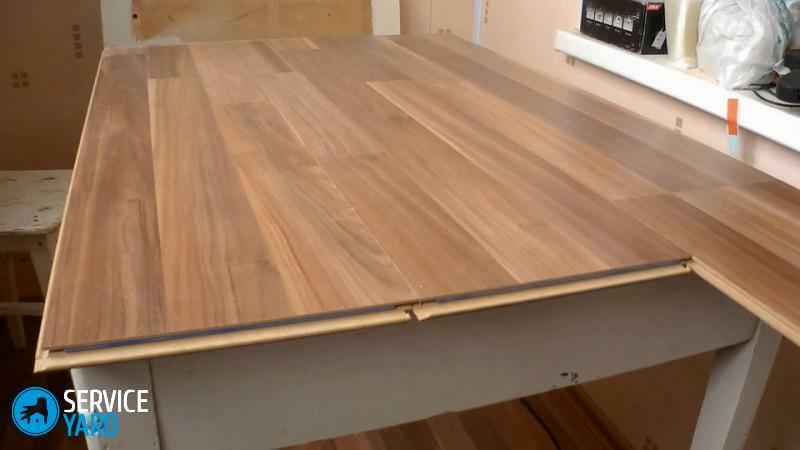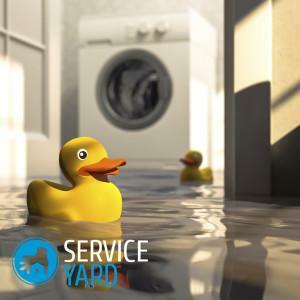On the market of heating equipment, infrared heaters are present for a long time and, due to the effectiveness of the principle of action, there is a niche occupied by the impressive size. Design infrared heaters, their control and safety systems are constantly being improved, the primitive units for sale are no longer arrives, so infrared heaters with thermostat - devices usual, standard equipping of which is already perceived as due. However, the temperature regulators are different - not only regular (of varying degrees of functionality), but additional, installed in an actual space area to increase efficiency and ease of operation heater.

Consider a regular temperature regulators used for infrared heaters, and equipment of embodiments of the IR heaters an additional temperature control equipment - more sophisticated devices, which are difficult efficiency overemphasized.
Regulator IR heater temperature and its function
Operation of any heating device is accompanied by heating of the housing, air and objects in the room. The lack of control over these processes is not allowed - is fraught with the appearance of the heater overheating fire, not to mention the excessive heating of the air in the room and unjustified overspending energy carrier. Therefore, modern heaters necessarily equipped with thermostats, installation location and design of which are caused by the appointment.
Important! power mode switch of the heater is not a device that replaces temperature controller.
Depending on the installation location - directly on the machine or in the actual space area (remote device), the thermostat responds to heater body temperature or room air, and performs on-off of the heater, maintaining a predetermined pre mode.

Let us consider a temperature regulating device, and remote staff mounted on the infrared heaters.
Types of heating and cooling unit
Despite the many types of infrared heaters, types of thermostats used on them is much smaller. They differ among themselves in the destination that determines the location, contact environment and function (structure).
Electromechanical thermostat
Regulators electromechanical type are full-temperature devices, a heater installed on or inside it, responsive to the surface temperature of the unit or a liquid filled into the radiator (heat exchanger), and may be adjustable or unregulated.
Adjustable electromechanical thermostats controlled heating of air in the room by means of cyclic switching on / off the heater after the heater outlet performed in operating mode according to the following algorithm: warmed unit - the controller turned off the heating element - the unit is cold - controller included heater. That is, the space heating is controlled by the pre-selection on the controller the required degree of heating of the heater - conditional numerical value or risks. The first choice of the value or risks performed randomly and, after stabilization of the temperature in the room is adjusted upward or downward.

The design of controlled temperature controllers It can be of two types:
- capillary - special relays as a narrow cylinder, wherein the cylinder is a capsule with a liquid having a high coefficient of thermal expansion - the capsule closes with changes in temperature, opens the contacts via a special actuator construction; used in the liquid-filled radiators;
- bimetallic plate - an element combined from two dissimilar metals with a large difference in the coefficients of thermal expansion - the plate halves lengthened by heating so that the bend in the socket fit and the electrical circuit is opened, and after cooling again take their sizes and close the contacts.

Controlled electromechanical thermostats do not take into account the air temperature in the room, as well as the weather, time of day and year, so the accuracy of temperature control in a room with their help can not be provided. Nevertheless, these devices are reliable, easy to use and practical, and this is due to their use by date.
Unregulated electromechanical thermostats - devices to ensure safe operation of the heater. The essence of their purpose - to disconnect the heating element reaches a critical temperature value unit (105 degrees), for example, at a failure of the thermostat managed. The basic structural element of these devices - the bimetallic plate.

Important! The need for equipping of IR heater this device providing security Use undeniable - the timely disconnection of a heater in an emergency will prevent a fire or explosion.
The principle of operation of oil heaters and heaters parokapelnogo type, which are also in certain degree infrared, requires the installation of both types of thermostat - controlled and unmanaged.
Thermostat
These temperature control device are mounted on water heating radiators, also exercising space heating not only the initialization of convective air currents, but also by means of infrared radiation.
Thermostats for water heaters on the principle of action are divided into the following types:
- mechanical action;
- mechanical, electronically controlled valve.

Thermostat mechanical action radiator is mounted on the inlet pipe and the shut-off valve is a special construction having a bellows actuator - control flexible cylinder with corrugated walls in the form of bellows, which is filled with a liquid with a high coefficient of thermal expansion (toluene, wax). With the change in air temperature, the intensity of the heat radiator and the coolant temperature it is also changing. Cylinder in accordance with temperature variation is lengthened or shortened, moving the valve stem, and adjusts the amount of coolant supplied to the radiator.
Depending on the model, the thermostat construction is 2-3 mode, set manually by the consumer, allowing manage, but with low accuracy, intensity of space heating, adjusting the amount fed to the radiator coolant.
Mechanical thermostat electronically controlled valve - more complex device, is also set on the radiator, but additionally equipped with an integrated or external temperature sensor, have relevant area of the room. This movement of the rod in the oven controlled by a microprocessor, powered by a battery and receiving signals of temperature sensors.

Thermostats of this design is bigger, but much more functional, equipped with the housing electronic liquid crystal display, that allows to set the temperature to within 1 degrees. Produced models, allows you to program an hourly changing room temperature for one day.

To fine-tune the heat supply are made even more perfect thermostats having a servo structureBut they are not used on radiators and underfloor heating system. In such regulators rod in the locking device is driven by an electric motor, receiving a signal from a remote thermal sensor, which allows to control with a high accuracy temperature.

In common parlance is often referred to as the thermostat temperature control to any heater, but you should know for themselves, for example, that "Heater thermostat for oil" - the definition in fact wrong, because this controller on the principle of action is thermostat.
The mechanical temperature controller
Thermostat mechanical action for instrument control, acting on the temperature in the room, and can control both heating and cooling. Working range controlled room temperature of such devices (domestic use) is usually 5-30 degrees.
The apparatus and operating principle of the device
The action of a mechanical thermostat is based on the physical properties of the material within its structure, this device does not contain relevant to electricity filling and therefore requires no electric power consumption, but for the operation of the device it is necessary to switch to an electric circuit heater.
Any mechanical thermostat has a hollow structure inside the membrane is filled with a gas - the main component, which it is based on the principle of the whole mechanism, so the mechanical temperature controllers are also called membrane.

Under the influence of the temperature in the membrane gas changes its volume and its effect on the walls - Spreads or shifts, thereby closing or opening the circuit contacts.

Despite the simplicity of construction, mechanical thermostat has a decided advantage over electromechanical - responds to air temperature changes, instead of the heater housing that allows to maintain predetermined temperature conditions with a small error.
thermostat switching temperature nomination by turning the handwheel to align risks with the desired scale value. Stem flywheel linked to a membrane which, depending on the direction of its rotation, approaching or moving away from the locking her contacts. Thus, by delaying the membrane contact, we increase the temperature value required for the desired expansion of the gas and the circuit, and vice versa.

On the body, except setting wheel, there is a toggle switch which opens the circuit, thus disabling the instrument and heater.
Mounting the control device
By the size of the mechanical thermostats produced little more than light switch, with a square or rectangular face plate of various decorative performance.
By the method of mounting devices are divided into indoor and outdoor accommodation.
To install the internal arrangement of the device operate in the wall Grooves for wiring and a mounting slot (usually small depth - 12-20 mm), under the box, which will then set the regulator, so after this installation will require repair finishes premises.
External devices do not require the preparation of the base, attached way snipe-screw and wiring is done open way.

To place a control device in the premises must be taking into account the following rules:
- height position the device on the wall must be 1.5 m above the floor (+/- 5 cm);
- the device should not be mounted to the ceiling set in the way of drafts over the heat sources and in places exposed to direct sunlight;
- Do not install the mechanism behind curtains, furniture, etc .;
- mounting socket should not be plunged moisture.
Important! membrane thermostat can be used for heating room control IR heater, but one condition - the infrared radiation should be directed to the device, however at placing a ceiling radiator to the choice of a location control device should be taken especially attentively.
The ideal place for the mechanical arrangement of the thermostat management infrared heater - distal wall of the room, but the values are set to the temperature you need to make an amendment to the remoteness from the actual area.
Connecting mechanical regulator
Inset control device in the electric circuit of the heater is not unlike the mounting powerful sockets, the main requirement - to use a wire with a quadrature-section corresponding to the power heater.
Regulator can be placed on one of two options:
- between the outlet and the heater;
- between the heater and the electrical panel - preferred method.
Let us consider the operation of tapping, so how to connect the thermostat to the infrared heaters can be different, depending on the number of heaters.
The regulating device, whose power is typically 3 kW, has 4 terminals - two for connection to the circuit breaker on the electrical panel, and two - the heating unit.
According to the standard procedure of the circuit-breaker on the electrical panel to terminal blocks on the controller input is pulled two cables, and then exit from the regulator to the heater stretch two more.

If one controller is scheduled to connect several heaters, you can do so in two ways:
- from each of the terminals on the output control device should go as cables, how much will connect heaters - on each unit is a wire (number of pairs of wires from the adjusting device corresponds to the number of plug heaters);
- the device is removed from the two cables, which in turn are powered heaters.
Both of these ways to connect remote thermostat to household Infrared heaters are made in parallel.

Alternating connection of two heaters to the controller in parallel.
Connected to the regulator several heaters better using magnetic starter circuit - the device controlling the equipment, which creates significant current loads.
For clarity, the magnetic circuit using the starter to connection thermostat to Infrared heaters can be represented as follows:

Electronic temperature adjustment device
This group controller is the most advanced, complex and therefore expensive technology is used to provide a comfortable room temperature control.
Briefly, the principle of operation of the electronic thermostat is as follows. The actual area of the premises is mounted remote electronic sensor, monitoryaschy air environment, a microprocessor-controller, by means of which the desired value is set air temperature. The microprocessor receives information from the sensor connected to it, analyzes it, and when necessary sends a response to the heater control signal to switch on or off. At this signal, the electronic control system adopted in the aggregate, there is a closure or opening of the control relay in the electrical circuit.

Important! The main advantages of regulating electronic type devices is the possibility of high precision control temperature and programming tasks to maintain a certain temperature in a room with a view of existing factors.
Potential fine-tuning these controllers could have done heaters with electronic thermostat most economical electrical equipment including infrared units, if not for the high price of such devices and their repair. In addition, the installation of heaters with electronic thermostat requires the artist professional knowledge and skills, so in most cases carried out by specialists and also not cheap.
We would also like to recommend the portal of household and construction equipment. It contains reviews and articles for choice of virtually any home device, from the refrigerator to the heater. website TechnoSova.ru.
conclusion
Thus, thermostats for infrared heaters divided into the following three groups - required to install devices to facilitate the control mechanisms and ensure device comfort.
What type of heater you choose depends on the consumer, but the priority in the selection should be given to equipment with a maximum degree of safety of operation.
The main essence of the article
- The thermostat in the modern heaters - a familiar design element, whose presence is taken for granted.
- Temperature Controllers subdivided into mandatory installation (to ensure security) and increase the functionality of the heating equipment. The presence in the heaters devices of the first group, many consumers do not even know.
- Coma regular controls, mandatory for the installation and optimize heater control, produced controllers for retrofitting heaters in order to increase their efficiency and functionality.
- The possibility of self-assembly temperature control devices depends on their complexity. Manufacturers offer a wide range of controllers that can be installed with their own hands, inviting electrician only as a consultant.
- When equipment for the heater is selected, the electronic controller should be weighed objectively matching class heater complexity control device - it can save you from unnecessary costs, as is often sufficient functionality of more simple and cheap thermostats.



